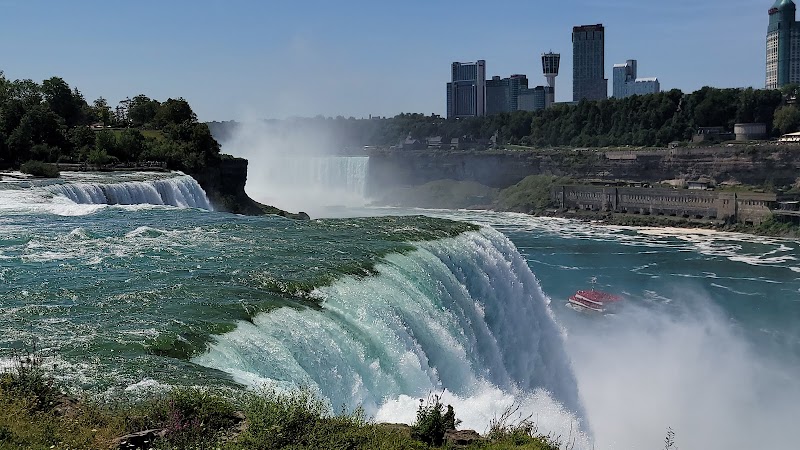
Discover the Annual Holland Marsh Birding Festival: A Practical Guide to Bradford West Gwillimbury’s Avian Adventure
Experience the Annual Holland Marsh Birding Festival, where Ontario’s rich wetlands burst with migratory and local bird species. Perfect for casual watchers and seasoned birders alike, the festival combines easy terrain with vibrant birdlife and hands-on conservation insights.
Bring Sturdy Waterproof Footwear
Trails wind through marshy areas where soft, muddy ground is common, especially after spring rains. Footwear with traction and waterproofing will keep you steady and dry.
Start Birding Early
Bird activity peaks around sunrise. Plan your walks early to catch the best sightings before birds settle for the day.
Pack Binoculars and a Field Guide
Close observation makes all the difference here. Lightweight binoculars and a local bird guide improve your chances of identifying key species.
Stay Hydrated and Dress in Layers
Spring weather can shift quickly. Bring water and dress in layers to accommodate morning chills and midday warmth.
Discover the Annual Holland Marsh Birding Festival: A Practical Guide to Bradford West Gwillimbury’s Avian Adventure
Every May, the Holland Marsh, just outside Bradford West Gwillimbury, Ontario, becomes a magnet for bird watchers of every skill level. The Annual Holland Marsh Birding Festival turns this fertile agricultural landscape into a living theater of wings, calls, and movement. Broad, flat farmlands meet stretches of wetlands carved by trickling creeks and tussled by shifting marsh reeds. It’s a setting where birds don’t just appear—they actively engage, daring you to notice their dance.
The festival invites you to explore these habitats along multiple walking trails and driving routes with distances ranging from easy 2-kilometer strolls to moderate 8-kilometer treks. Elevation changes are minimal, but the terrain offers soft, sometimes muddy paths that challenge your footing. Forest strips provide cool shade while the open marshes stretch like green oceans inviting you to scan their horizon for waterfowl, raptors, and songbirds.
Expect to hear warblers chirping high in silver maples, feel the rush of a red-tailed hawk slicing through the brisk air, and witness flocks of geese paddling out of reeds as you pass. If you’re bringing binoculars and a field guide, keep them ready: every moment can surprise. Hydration helps, as spring warmth can quickly swell under a sun-softened sky. Footwear with good tread matters for uneven marsh edges. Strike out early in the day – bird activity peaks at dawn and wanes by afternoon.
Significant too, the festival balances adventure with stewardship. Expert-led tours highlight the delicate relationship between wetlands and bird survival. You’ll learn why marsh conservation matters—not just here but across Ontario’s greenspaces. Nature here is fiercely itself, not tamed, only respected. This translates to a festival experience rooted in real-world appreciation, one that rewards curiosity with discovery and respect with memorable encounters.
Whether you’re on your first birding outing or your fiftieth, the Holland Marsh Birding Festival offers a refreshing, approachable way to connect with the wild. It’s a call to lace up, look closer, and meet a landscape alive with wings brushing wind and waters patiently moving forward.
Nearby Trips
All Adventures
Boat Charters
Water Activities
Adventures near Bradford West Gwillimbury, Ontario
Discover the unique and memorable adventures that make Bradford West Gwillimbury, Ontario special.
Frequently Asked Questions
What kinds of birds can I expect to see at the Holland Marsh Birding Festival?
Visitors commonly spot a range of species including warblers, red-winged blackbirds, great blue herons, and a variety of waterfowl like ducks and geese. Raptors such as red-tailed hawks and occasional bald eagles patrol the skies.
Are the bird-watching trails accessible for families and casual hikers?
Yes, the trails vary in length but are generally flat and well-marked, making them suitable for kids and casual walkers. Just prepare for uneven terrain in marshy sections.
Is there guided support or expert tours during the festival?
Absolutely. The festival offers guided walks led by local birding experts who provide insights into both the birds' behavior and the ecology of the wetlands.
What conservation efforts are highlighted during the festival?
The festival emphasizes wetland protection, discussing how preserving aquatic plants and marshlands sustains migrating bird populations and local biodiversity.
Can I bring my own vehicle into the marsh for viewing?
Some routes permit driving along designated roads, but most birding requires walking the trails to avoid disturbing wildlife, so plan to park and explore on foot.
Are there any local spots nearby for post-hike meals or lodging?
Bradford West Gwillimbury offers several local eateries featuring farm-fresh ingredients, and a variety of inns and B&Bs are available within a short drive from the festival site.
Recommended Gear
Binoculars
Essential for scanning distant bird activity across marshlands.
Waterproof Hiking Boots
Keeps feet dry and stable during wet and muddy trail conditions.
Layered Clothing
Allows easy adjustment to fluctuating temperatures typical of spring days.
Water Bottle
Maintains hydration, especially during multi-hour early morning hikes.
Local Insights
Hidden Gems
- "The small forest patches east of the main marsh provide quiet spots to watch migrating songbirds unseen by most visitors."
- "Creek banks within the marsh reveal secret perches used by kingfishers and herons."
Wildlife
- "Watch for muskrats weaving through the reeds and eastern painted turtles basking on logs during warmer months."
- "The festival sometimes spotlights the occasional sandhill crane passing overhead."
History
"Holland Marsh was transformed from a wetland to rich farmland over the 20th century, involving careful management that now balances agriculture with critical bird habitats."
